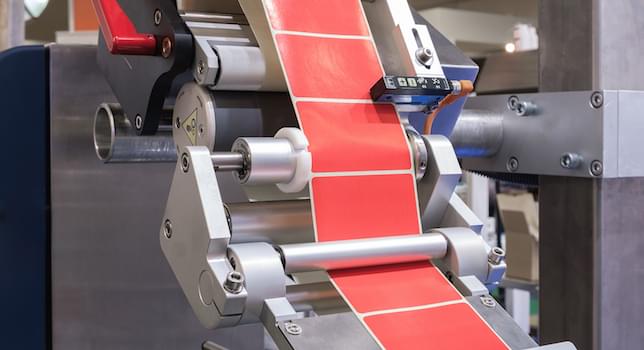29 September 2022
THE FUTURE OF PACKAGE PRINTING TO 2027

Printed packaging continues to increase in demand, and represent a strategic priority for press OEMs, ink suppliers and print service providers across the next five years.
A new dedicated study – The Future of Package Printing to 2027 – on how this sector is emerging from COVID-19 and will evolve in the medium term is now available to purchase from Smithers. The data forecasting charts how a global market worth in $456.3 bn in 2021, will increase to $473.7 bn; and then grow at a compound annual growth rate (CAGR) of 3.1% to reach $551.3 bn in 2027 (constant 2021 prices).
Across the same period, the volume of corrugated board, folding cartons, rigid and flexible plastics, metal, and labels stocks printed worldwide will increase from 13.0 tn to 15.4 tn A4 print equivalents.
Flexo will remain the most widely used print process – due to its popularity in long-run corrugated board, labels and flexible plastics. It represents around 36% of the contemporary market and natural expansion gives flexo a positive growth outlook (+2.4% CAGR, by value) through to 2027. Other analog processes, including litho offset (+2.5% CAGR), will see similar organic growth across the five-year Smithers study period, mainly from developing markets.
The greatest expansion however will come from digital print – with a CAGR of over 10% forecast through to 2027. Print service providers are poised to reap the benefits of significant R&D investment by digital OEMs, delivering improvements in productivity, reliability and expanding the number of print commissions where digital is price-competitive with established analogue production.
Packaging print is becoming increasingly competitive and will be the focus for further technical innovation through the 2020s. Among the main challenges are:
-
Improving the sustainability of print systems by minimising waste, optimising the energy efficiency of print equipment, and developing systems that can print on an array of new more sustainable packaging substrates, including flexible barrier papers, moulded fibre, and monomaterial polymer constructions;
-
Adapt to new legislative requirements to move away from single-use plastics, and improve recyclability of all formats.
-
Reacting to post-COVID-19 print buying patterns, by reducing turnaround times, embracing print-on-demand business models, and enabling more economic short promotional and versioning commissions.
-
Make print supply more resilient and agile to withstand disruption, including following the post-pandemic trend to re-shore or near-shore of production of certain essential FMCGs;
-
Evolve print technologies and business models to capitalize on opportunities in the booming e-commerce segment, innovating with print designs and graphics to optimize engagement with home delivery customers.
-
Implement the latest automation advances in both digital and analog production. These Industry 4.0 technologies have the potential to simultaneously reduce the need for skilled print room labour; while increasing responsiveness and overall print quality, consistency and uptime.
-
These factors will contribute to further the penetration of digital printing – especially inkjet – in packaging and labels work. A trend that will also benefit from advances in workflow software making printing more streamlined and cost-efficient; thereby allowing more low-run jobs to be produced.
The impact of all these drivers is assessed critically in The Future of Package Printing to 2027. This analysis is quantified in a comprehensive dataset with over 150 data tables and figures, segmenting the market for 2017-2027 by:
-
Packaging type (labels, corrugated & solid fibre, folding cartons, flexible packaging, rigid plastics and metal);
-
Print process (litho offset, gravure, flexo, screen, other analog, digital);
-
End-use segment (food, drink, healthcare, cosmetics, other consumer, other);
-
Geographic region and major national market (Western Europe, France, Germany, Italy, Spain, UK, Other Western Europe; North America, Canada, US; Asia, China, India, Japan, Other Asia; Latin America, Brazil, Mexico, Other Latin America; Eastern Europe, Poland, Russia, Other Eastern Europe; Middle East, Turkey, Other Middle East; Africa; Australasia)
Source: https://www.thepackagingportal.com/industry-news/the-future-of-package-printing-to-2027/
This Post was originally published on -The Packaging Portal